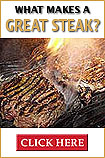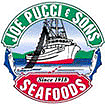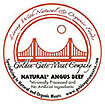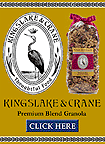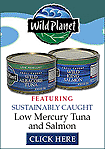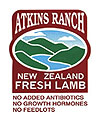Deadly Season
Abalone harvest's costliest
start in decades calls safety, licensing
into question
By
DEREK J. MOORE
THE PRESS DEMOCRAT
Four people have died while abalone hunting
this month, marking the deadliest start
to the season in at least 20 years.
Perhaps even more disturbing, heart attacks,
drownings and fatal shark attacks on abalone
hunters have made the sport the single
most lethal ocean-going pursuit on the
Sonoma and Mendocino coasts in the past
10 years, claiming at least 30 lives.
That
represents 42 percent of coastal water
deaths during that period. The other 58
percent includes boating accidents and
being swept from the beach by waves, each
accounting for 16 deaths.
The
figures, which are based on a review of
Press Democrat archives and do not include
falls from cliffs, underscore the potentially
deadly risks associated with abalone hunting,
which is as much a part of the North Coast
lifestyle as surfing or beachcombing.
And
yet, more protections are afforded the
invertebrate creature than those who seek
it out.
Enthusiasts
must abide by size and catch limits, a
ban on artificial air and other rules
while harvesting the prized mollusk. To
go diving or rock picking, a person must
simply be over the age of 16 and pay for
a fishing license and abalone report card,
which is used to record daily and annual
tallies.
Despite
the number of overall fatalities associated
with the sport -- at least 61 deaths on
the North Coast since 1987 -- there has
not been any significant push to change
licensing requirements.
"There
has been great talk of changes to the
regulations for harvesting abalone in
general, but the safety issues have not
come up or been a focus," said Adrianna
Shea, spokeswoman for the California Fish
and Game Commission, which oversees natural-resource
protection in the state.
The
issue fundamentally is one of responsibility
-- the responsibility of individuals to
know the risks and take appropriate precautions,
and the responsibility of society to sometimes
protect people from their own unwise choices.
People
stand a better chance of being injured
or killed on the drive to the coast than
from anything they might do once they
get there. But licensing, seat-belt laws
and other driving standards are in place
to mitigate the risk.
"What
we've seen this month has elevated the
whole issue to a higher point," said
Bruce Rogerson, a retired risk manager
who lives in Fort Bragg and is a member
of the Mendocino County Water Safety Coalition.
Rogerson
acknowledged that any proposals for change
would be met with resistance.
"When you introduce licensing requirements,
that can tend to be pretty controversial,"
he said. "But it may be that it's
reaching that point. We haven't taken
a position on that within the coalition."
Many
abalone hunters already feel burdened
by government interference. Harvesting
is restricted to the waters north of San
Francisco Bay, with limits of three abalone
a day and 24 a year.
Risks
discounted
Many
people also discount the risks of the
sport, saying for instance that a person
can die of a heart attack anywhere. It's
not the sport that raises the risk, so
the argument goes, but a person's own
ill health.
Three
of the four people who died this month
may have suffered a medical emergency,
according to the Mendocino County Coroner's
Office, which is awaiting more definitive
test results.
Arthur
"Sam" Boyd, 70, of Atascadero,
died April 18 in Caspar. The same day,
Selina Sau Yee Cheung, 60, of Gilroy,
died near the Point Arena lighthouse.
The
following day in the same area, Mang Jay
Yang, 36, of Suisun died. Then on Sunday,
Craig Sangalli, 51, of Oakland perished
near Fort Bragg.
Sangalli
and Yang, whose drowning death was likely
unrelated to a medical emergency, had
been diving for abalone. The others were
rock picking.
The
fact all four were from outside the North
Coast speaks to what some have referred
to as the "Sacramento syndrome,"
which refers to people who drive long
distances to get to the coast, where exhaustion
and unfamiliarity with conditions can
sometimes make a lethal combination.
Two-thirds
of the abalone hunters who've perished
on the North Coast in the past 10 years
were from outside Sonoma and Mendocino
counties, according to Press Democrat
records.
"It's
been this way for a long time," said
Roger Rude, a retired Sonoma County sheriff's
lieutenant and avid abalone diver. "There
have been fatalities and there will be
fatalities, even if people are, quote,
'licensed.' They are still going to go
out and get in over their heads because
they are people."
Rude
used to oversee the sheriff's helicopter
unit and over the years participated in
numerous rescues of abalone hunters.
"What
you're trying to do is protect the stupid
from themselves. That's where I think
government goes overboard," he said.
Sport
is soaring
Interest
in the sport is soaring. In 2005, the
last year for which statistics are available,
more than 35,000 hunters took 235,000
abalone, according to Steve Martarano
of the California Department of Fish and
Game.
The
potential for trouble has not gone unnoticed.
The
Mendocino Land Trust sounded the alarm
on potential safety problems at Cantus
Cove, in the rural enclave of Caspar,
after two abalone divers had to be rescued
there last year.
In
the September 2006 report submitted to
the California Coastal Commission and
California Coastal Conservancy, the trust
recommended more outreach and education
programs on the coast to try and prevent
future problems.
Six
months later, Boyd's death while rock
picking in Cantus Cove on April 18 underscores
that maybe more should be done.
Susan
Juhl, whose home overlooks the cove, said
she's grown weary of emergency vehicles
parking in her driveway when rescues are
under way. At the very least, she said,
a sign warning people of the dangers might
help.
"There's
undertow and a lot of slippery rocks,"
she said. "Of course, I wonder how
many close calls there have been."
Increasing
safety awareness has proved challenging,
however.
Rogerson
with the water safety coalition said the
group's efforts to distribute brochures
and laminated cards at dive shops, gas
stations and other points of contact have
been hampered by a lack of money and interest.
"Shark
attacks get people's attention,"
he said.
Licensing
would affect all
Licensing
changes would affect every abalone hunter
no matter where they lived and do more
to guarantee that the information was
received. Such changes would require the
Legislature to grant that authority to
the Fish and Game Commission, as was the
case for other hunters, who must undergo
a 10-day safety course before getting
their tags.
The
sheriff's helicopter increases patrols
of the coast on the opening weekends of
the abalone season, which runs from April
to November with a break in July. As many
as three lifeguards patrol state parks
on the Sonoma Coast, but with 14 miles
of shoreline to cover, it's a tall order
to help everyone.
Warning
signs are another option. But where to
put them would be a considerable challenge
given the innumerable access points to
abalone hunting areas, which cross over
county, state and private property.
Language
barriers are an issue. Of the 16 people
who died while abalone hunting on the
North Coast since 2000, half had Asian
surnames.
Whether
abalone hunters would actually heed those
warnings is another story. At Salt Point
State Park, signs inform visitors about
tides, water visibility, small craft advisories
and other information.
Nevertheless,
17 abalone hunters have died there in
the past 20 years, making it the single
deadliest spot on the coast.
"I
can be standing with someone one-on-one
and tell them, 'I don't care if you drove
from Sacramento. The surf is bad, the
kelp is blooming and it's not safe to
surf the water,' " said Heidi Horvitz,
the supervising ranger at Fort Ross State
Historic Park. "And you know what
they tell me? They tell me, 'I've been
diving for 20 years. Don't you tell me
what I can do.' "
News
researcher Teresa Meikle contributed to
this report. You can reach Staff Writer
Derek J. Moore at 521-5336 or derek.moore@pressdemocrat.com.




